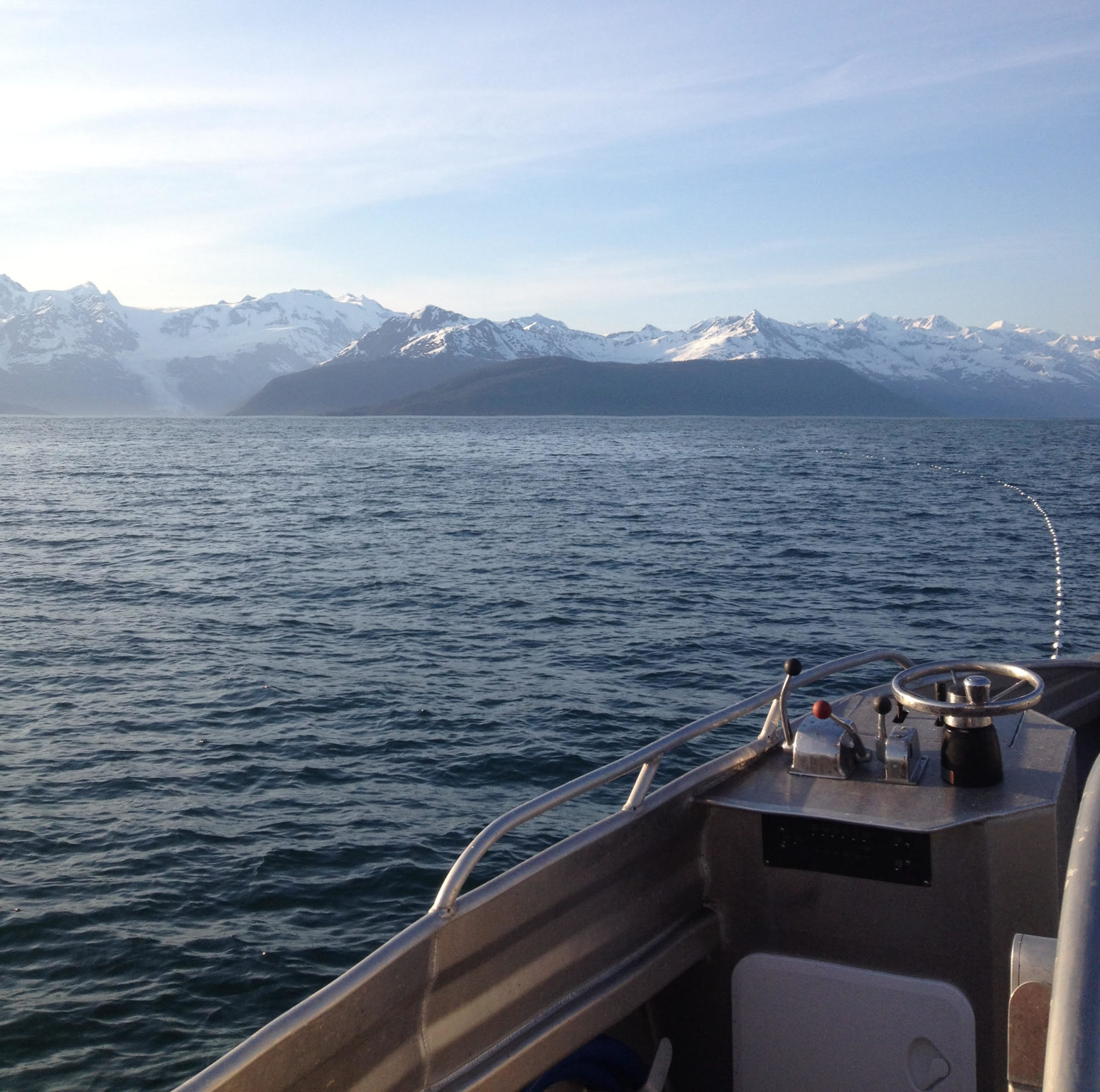A friend of ours that recently got out of the fishery had a boat named the “About Time”.
Thinking about the way this season has progressed, those are the only words that come to mind.
After feeling like wasting our time for a couple weeks, FINALLY, the fish have showed up.
Our last two fishing periods have begun with scooping 2,500 lbs of sockeye salmon out of western Prince William Sound’s Eshamy District, and leaving us with far more peace of mind. Not only do these scores pad the checkbook, they provide a sense of hope for what is soon to come. The run appears strong and just beginning to build. Sockeye salmon don’t often show up in this same density that they have early in this season. Another promising attribute of this run is the percentage of female fish being harvested. As a run of salmon progresses, the female percentage gradually increases. In the beginning, the percentage is low, usually between 20-30%. By the end, it reaches high into the 70-80% range. Based on samples of fish we’ve harvested, the female percentage is still around 30%, leaving plenty of room for improvement.
The run of chum salmon that returns to NW Prince William Sound’s Coghill District also appears to be on the rise.
Two weeks ago I sat anchored up in the exact same spot I am now, staring out at the bay that harbors the hatchery which the fish return home to. Now I do the same, with one difference: There’s fish here.
Some jump clear out of the water, others barely break the surface, showing their fins. Harbor seals chase the schools and sea lions do the same, just a little more effectively. They show off their catch, flipping it around in the air, flinging around scraps for the seagulls that swarm just overhead.
Its still not the scene we would expect to see at this point of the season, but it is a start; and despite data from previous years, a start may be what we should expect. After factoring in other traits of the run, it appears to simply be late. There are enormous schools of fish offshore in the district and stories of even larger ones in the middle of Prince William Sound, soon to arrive.
Our only limiting factor now is the management and the area and time they give us to fish. Although these giant schools have entered the district, we are not allowed to fish on them because they need to be harvested for cost recovery. Cost recovery is what pays for the hatchery to continue operating, as the majority of the fish we catch were raised there until they are old enough to be released into the wild (this process produces fish that are just as fresh and wild as the small runs that return to the creeks throughout Prince William Sound). Although cost recovery has limited our area produced statistics that are promising as well. They are harvesting around 500,000 lbs per day and only 28% of these fish are female, suggesting that this is just the front end of a much-larger-than-predicted run.
By this time we are usually half done with our season, but this year reflects a different time frame. When you consider all of the factors besides just the date, most of our season may still be to come.

Above: A seiner (left) and its large capacity tender boat (right) hunt for schools of fish to harvest in the cost recovery effort. Seining is a much more effective way of catching fish, so it is used to expedite the process of cost recovery. The tender pumps the fish off of the scene boat, tallying the number of pounds and allowing the seiner to keep fishing.

Above: Four bowpickers raft up and enjoy a day off across the bay.

Above: This raven paid me a visit halway through writing this entry. In different cultures, ravens vary in meanings from death to prosperity. Only the remainder of the season will tell which rings true.

Love the pictures! Especially the raven. Prosperity of course!